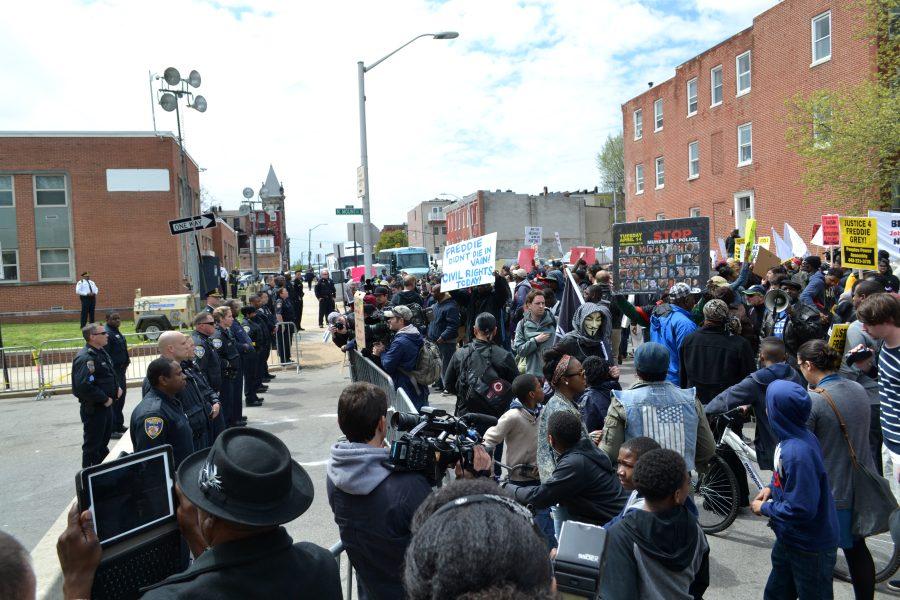On April 15, Freddie Gray was arrested and transported by six Baltimore officers, becoming fatally injured while in their custody. His neck broken, the 25-year-old African American male fell into a coma and died a week later, sparking protesting and rioting in Baltimore. This comes after a recent series of highly publicized events characterized by excessive police force, during an ongoing pubic conversation about racism within the criminal justice system.
On the morning of April 15, Freddie Gray made eye contact with law enforcement officers in a western Baltimore neighborhood, and ran away “unprovoked upon noticing police presence,” as penned in arrest records obtained by the Baltimore Sun. Police chased, physically restrained, and then arrested Gray for a knife in his possession they believed to be an illegal switch blade, but which the Gray family lawyer later revealed was spring-assisted and legal.
Local residents gathered around the scene and recorded cellphone video that shows Gray dragged into the back of a police van, which then made multiple stops during transportation, at one point answering a call to support other police units, and picked up an additional prisoner. Gray’s repeated request for medical assistance was not granted, and at the station he was observed as unresponsive.
On May 1, the coroner said Gray died from medical complications arising when 80 percent of his spine was severed, brought on by impacts experienced in the moving van. Later on May 1, Baltimore State Attorney Marilyn Mosby publicly stated she would be prosecuting the six officers involved for homicide.
Initially handcuffed, Gray’s legs were bound, but at no point was he secured with a seat belt—something against policy, said Baltimore police commissioner Anthony Blatts at a press conference on April 24.
In the weeks following Gray’s death, civil unrest spread throughout the city, resulting widespread protesting, much of it peaceful, with some pockets of rioting. Violence escalated after Gray’s funeral on April 30, and cars were burned, stores looted, and rocks thrown at police during confrontations.
Gray’s death is the newest addition to a growing series of highly publicized instances of excessive force used by police, with others being the deaths of Michael Brown and Eric Garner. Last fall, Ferguson, Miss., exploded into the media’s focus and into popular discourse about race after local tensions accumulated around the trial of officer Darren Wilson, who killed the unarmed teenager Brown after a physical struggle. Garner was tackled by New York City police for selling cigarettes and killed with a chokehold.
“There are increasing actions of force with regular citizenry. Coupled with that is a dynamic of excessive force, particularly towards the African American community,” says Andrew Leong, a professor of law, social justice, and Asian American studies at the University of Massachusetts Boston and a practicing lawyer.
Leong thinks we need to shine a spotlight on police behavior, in hopes that mandatory chest-cameras will dissuade excessive force and specific protocols will ensure justice when it does occur. He thinks civilian-run committees should be brought in to investigate these types of cases, as opposed to a reliance on internal investigation, which runs the risk of conflict of interest. He also points out a specific Baltimore law that allows police 10 days before presenting a statement, ample time to formulate a story in order to collude.
Freddie Gray Dead at the Hands of Law Enforcement
May 2, 2015





















































